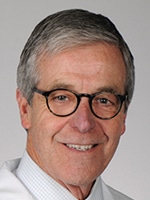
Dr. Nolte
Uncharted season forges new paths for all hands
“Uncharted territory for influenza” is how Frederick Nolte, PhD, D(ABMM), of the Medical University of South Carolina, describes the prospect of testing for influenza at the scale labs have been testing for SARS-CoV-2. And does a positive test for influenza mean the patient doesn’t have COVID-19? In a child with mild illness, how will it be known if it’s COVID or a rhinovirus? Having to make the latter diagnosis “will make for a long winter season,” says Christine Ginocchio, PhD, MT(ASCP), of BioMérieux/BioFire Diagnostics. Read more.

Dr. Crawford
Compass points chart the pandemic
Between a rock and a hard place. Trying to stay ahead, trying to build inventory. Chasing multiple new testing requests. Anticipating influenza. That’s where laboratory leaders said their labs were in early August when CAP TODAY publisher Bob McGonnagle convened members of the Compass Group on Zoom to share their pandemic experiences. They shared surprise, too, that the situation is what it is: “Not a clue in my mind that this would go past the springtime,” said Stan Schofield, president of NorDx and senior VP, MaineHealth. Read more.

Dr. Nolte
The laboratory tests of pandemic summer
In March, the COVID-19 pandemic came in like a lion—and has yet to leave, like a lamb or anything else. Instead, it roared through April and May in early hot spots like New York City and New Orleans. As lockdowns took hold, the cautious hope was that by summer the virus would be tamed (if not simply go away “like a miracle” or “as the heat comes in,” per several infamous predictions), giving health care providers a chance to exhale before a likely second wave in the fall. Read more.
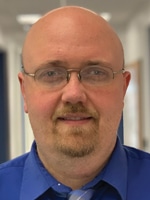
Dr. Anderson
Steps to verifying SARS-CoV-2 antibody assays
The CAP treats emergency use authorization assays similar to FDA-cleared assays and thus requires full verification. In a Juneac 4 CAP webinar, Neil Anderson, MD, D(ABMM), assistant director of clinical microbiology, Washington University School of Medicine in St. Louis, walked through how to approach verification for SARS-CoV-2 assays. Co-presenter Elitza Theel, PhD, D(ABMM), director of the infectious diseases serology laboratory at Mayo Clinic, reported what’s known about protective immunity against SARS-CoV-2. For analytical interference, typical substances to investigate are hemoglobin, bilirubin, and triglycerides, and this should be performed at the limit of detection. Read more.

Dr. Dickson
Lab with Ebola experience: COVID more complicated
If there’s one thing scarier to experience than COVID-19, it’s Ebola. Or so you might think. “Ebola was easier,” says Beverly Dickson, MD, medical director of the clinical laboratory at Texas Health Presbyterian Hospital Dallas. Not that she herself has experienced shortness of breath or body aches. Rather, she’s contrasting her experiences at a hospital that has treated patients with Ebola and patients with COVID-19. How those events stack up from the laboratory’s point of view may yield helpful insights for others in this time of pandemic. Read more.
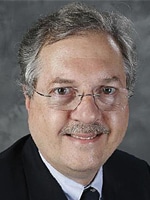
Dr. Abel
COVID testing capacity falls short as flu season nears
As the need for COVID-19 testing grows well beyond that for hospital patients, clinical laboratories in mid-summer were again overwhelmed by demand while at the same time bracing for flu season. That was the gist of a July 10 webinar that brought together Gyorgy Abel, MD, PhD, medical director of clinical chemistry, molecular diagnostics, immunology, and point-of-care testing at Lahey Hospital and Medical Center, Burlington, Mass.; Bob McGonnagle, CAP TODAY publisher; and moderator Steve Beuchaw, director of life science and medical device research, Wolfe Research. Read more.
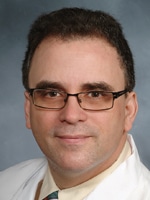
Dr. Borczuk
Reading COVID-19’s signature: lung tissue injury
Alain Charles Borczuk, MD, began his practice of pathology as a resident 28 years ago and has spent quite a bit of his career doing autopsies. But it is this year, during the pandemic, that he’s finding some of the best applications of his autopsy work as he seeks to understand the lung injury patterns in SARS CoV-2, or COVID-19 patients. “There has not been a period of time in which there’s been a greater realization of the absolute critical importance of doing autopsy than right now,” says Dr. Borczuk, professor of pathology at Weill Cornell Medical College and vice chair of anatomic pathology at Weill Cornell Medicine. Read more.

Dr. Fyodor
How one research lab morphed into a COVID-19 testing lab
In the early days of the COVID-19 pandemic, when the University of California, Berkeley’s Innovative Genomics Institute decided to rapidly shift gears from conducting research to testing the community for the SARS-CoV-2 virus, some insiders may have thought the university was biting off more than it could chew under a tight timeframe. Yet a look at the lab 23 days later surely had any doubters eating their words. Read more.
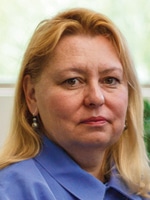
Dr. Slev
At the pandemic’s serologic frontier
The arrival of a pandemic has shown—among many, many other things—that anyone who talks about it typically starts by saying, “This is a pandemic.” The next sentence tends to be, “It’s a completely different situation,” whether the focus is grocery shopping, exercising (or not), voting, or practicing medicine. Pointing to the pandemic is a polite way of saying, “All bets are off.” For many, it’s been a springboard to innovation and breakthroughs, even in the midst of considerable anguish. Read more.
 CAP TODAY Pathology/Laboratory Medicine/Laboratory Management
CAP TODAY Pathology/Laboratory Medicine/Laboratory Management
